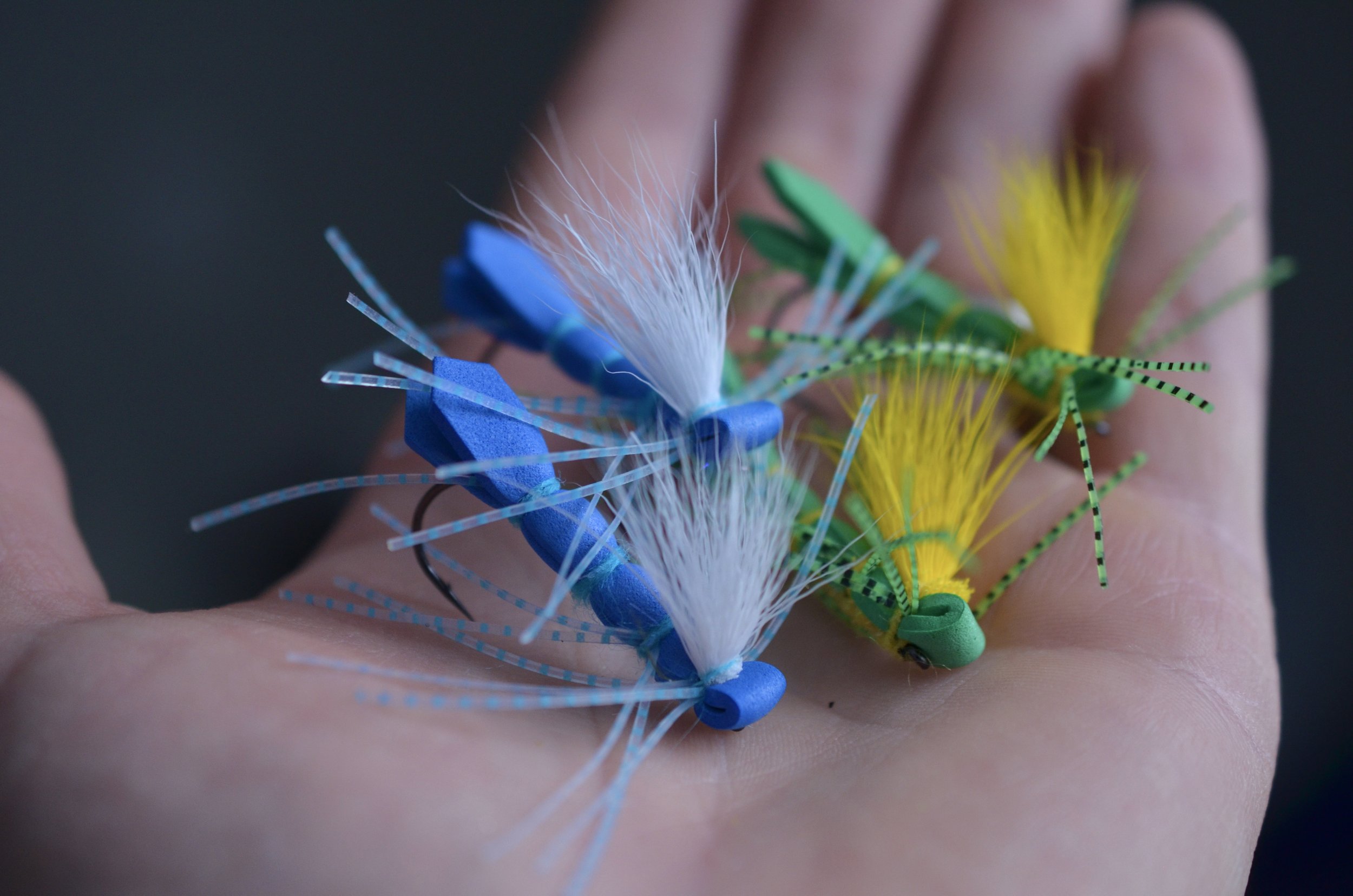Tactics and Strategies for Fishing Low and Clear Water
As summer progresses and the water gets low and clear, fly fishing can become more technical and tricky. Having the right gear and know-how will help improve your odds. In this article you will find some of my strategies and tactics for dialing the right combination to get that next fish on the line.
Downsize the fly. This is my first step in cracking the code. Yes, it’s fun to fish a large popper, streamer, or frog. The takes are big and it’s easy to track the fly, however, bigger is not always better. If the water is low and clear, I will change to a smaller fly to try to entice a bite.
Often, smaller flies will help convince fish to take the bait.
When fishing those smaller flies, especially topwater, subtle movements and twitches are what it takes to make a picky fish commit. The fish can see the fly and making it look alive and natural should be your goal. Long bubble trails and sounds often result in fish swimming away. Flies that have a lot of wiggle, rubber legs, and subtle movement find the most success.
Another strategy I use includes changing the fly to a more natural color. In low clear water sometimes that chartreuse and pink fly will spook fish away. A better option is to match the color of the river bed and natural forage. Flies that are olive, tan, or brown will often help seal the deal with picky fish in low clear water.
Small streamers can be very effective in low clear water if they are neutral/ natural colors.
Changing to a fly with less flash is also good practice when the water is low and clear. I’m guilty of putting a lot of flash on some of my flies and when the fishing gets tough, I have to search for that fly with minimal flash. If you can’t find one, don’t hesitate to cut some of it out. No sense using a fly that isn’t working. When you get home, you can always tie more.
When fishing for bass and pike, a short leaders work great, however, when conditions dictate, lengthening your leader will help distance your fly line from the fly. Typically an 6’-8’ leader is sufficient for bass fishing. But when bass get spooky, try lengthening your leader to 9’-12’. The extra distance will help you be more stealthy and less likely to scare wary fish away.
Low clear water conditions make for challenging fishing. Stick to shade lines and structure to find success.
Downsizing tippet may be necessary if lengthening your leader is not enough. When fishing for smallmouth and pike, I often use 15lb - 20lb leaders with no issues. If I find the fishing is slow, I will tie on 8lb - 12lb (3X-0X) tippet to give me a lower profile. It’s rare I will use anything smaller as I haven’t found the need for tying on 5x for bass.
Making the least amount of false casts is always good practice. It is even more important when the water is clear because there are less opportunities to announce your presence. Fish know there are airborne predators. Anytime we fling fly lines and flies over there heads we can signal those flight instincts. False casting can be fun and relaxing, but if we want to catch those smart fish, limit your casting and get the fly wet.
Flies that have lots of legs and impart subtle movement are great options for low and clear, top water smallmouth bass fishing.
Accuracy may be one of the most important aspects in fishing low clear water. It’s paramount to put the fly close to structure and the bank. A foot off the bank or structure simply won’t cut it. The fish are hiding, under structure, under overhung trees, or looking directly at the bank. Putting a fly too far way from structure or the bank will limit the amount of fish that see your fly. It’s hard to believe that 6” makes a difference, but try it for yourself and you’ll see.
This smallmouth bass was caught holding tight to the bank in low clear water. Accurate casts make all the difference.
Fishing pocket water and mid river structure is often overlooked when fishing for bass. This is often a very productive strategy when the water is low and clear. Just like trout and other species, bass want to have meal brought to them by the current and have safety in depth and structure. Pockets of deeper water give bass security, and us anglers a target, when the sun is high, water is gin clear, and levels are low. Bouncing crayfish patterns around pockets, submerged rock piles, and boulders can make or break the day in tough fishing conditions.
Simple crayfish and crab patterns like this Tom’s Rootbeer Redfish Candy are great flies to throw around rocks and submerged boulders for smallmouth bass.
Last and not least, patience and timing are everything. If you’re planning a trip to the river and you know the water is low and clear, understand that early mornings and evening give you the greatest chance of success. During theses times, the shadows are long, fish are out hunting their next meal, and there is less chance of being spotted. Be patient, the fish are there, pick your casts and make them count.
I hope this article give you some insight on how to problem solve low, clear, and challenging water conditions. These are the strategies and tactics I use on my waters and I am confident they can help you on yours. For more article like this delivered to your inbox, make sure to sign up on the title page of the blog.
Like always, I hope you get to enjoy the water safely with family and friends.
Tight lines,
Allen







